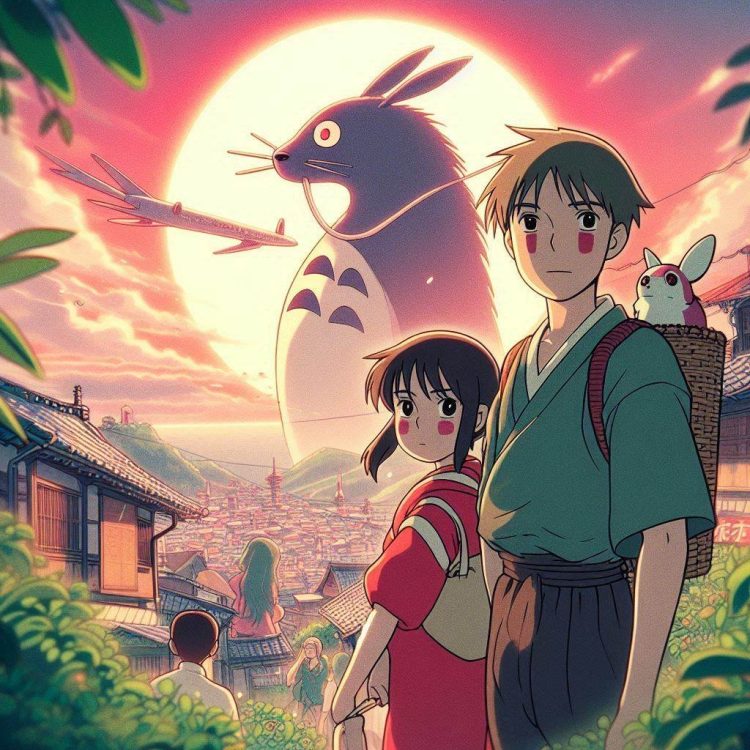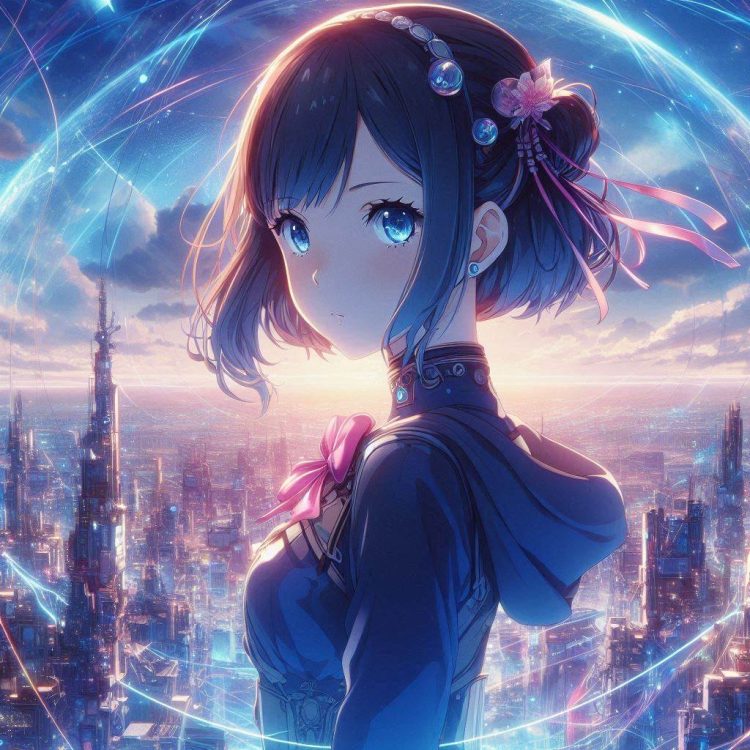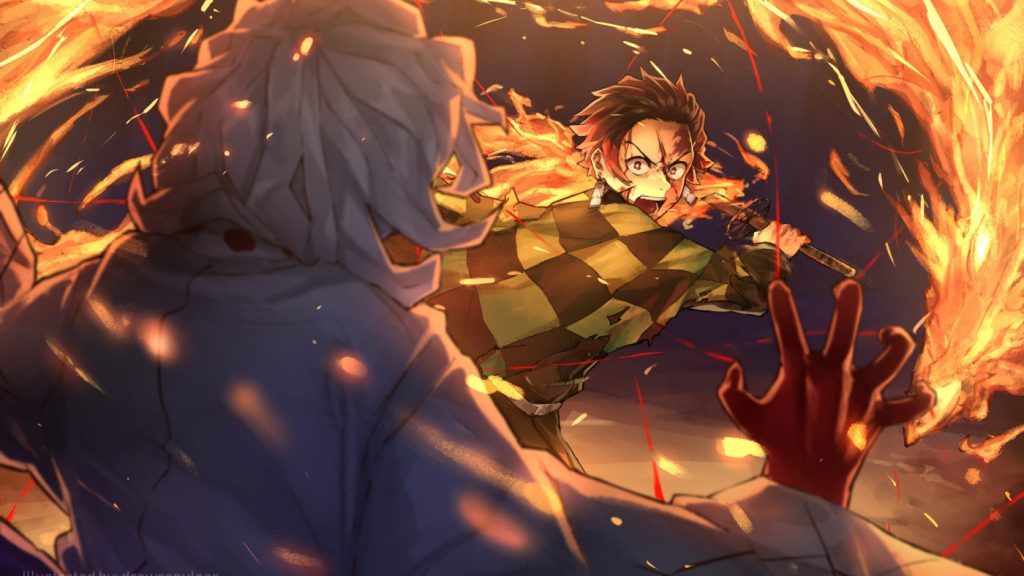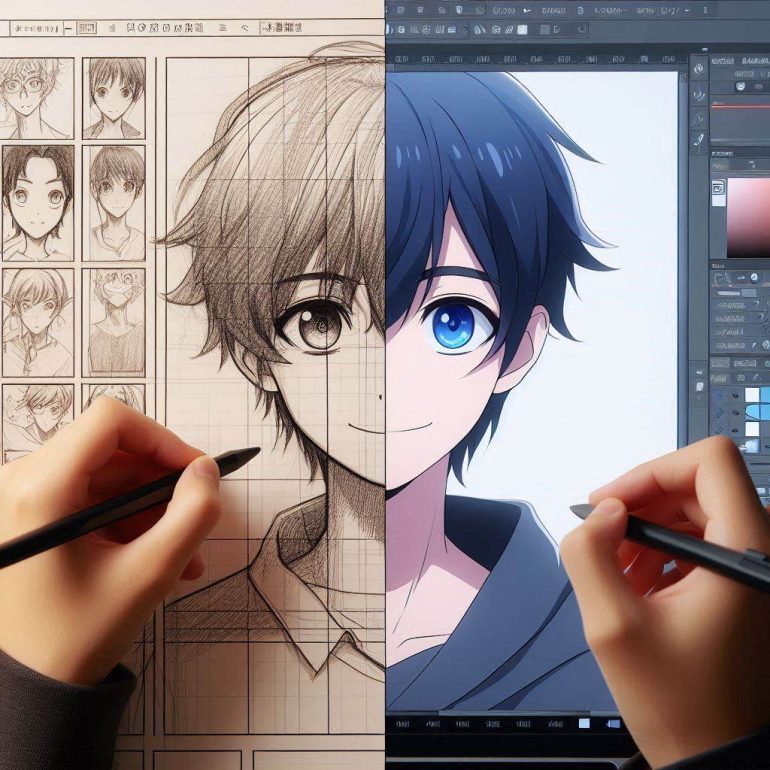For decades, anime enthusiasts have passionately debated the merits of traditional and digital animation. These two approaches, as different as a brushstroke and a byte, breathe life into the vibrant world of anime. Both traditional and digital animation boast unique strengths and weaknesses, ultimately serving as tools to tell captivating stories and create breathtaking visuals. Let’s delve into the heart of this artistic duel!
The Enduring Legacy of Traditional Animation
Traditional animation, also known as cel animation, is the OG of the anime world. This time-tested technique involves hand-drawn frames, meticulously crafted by animators. The result? A distinct aesthetic brimming with charm and character.
- A Feast for the Eyes: Traditional animation boasts a unique, organic quality. Slight imperfections and variations in linework create a sense of life and artistry unmatched by digital techniques. Think of iconic characters like Goku or Sailor Moon – their expressive faces, brought to life through subtle shifts in features, convey a range of emotions that resonate deeply with viewers.
- Storytelling at its Core: The limitations of traditional animation, like fewer frames per second, often lead to a focus on impactful moments rather than hyper-realistic movement. This prioritizes storytelling, allowing animators to emphasize key scenes and emotional beats. The result? Narratives that pack a powerful punch.
However, traditional animation isn’t without its challenges.
- A Labor of Love: Producing a traditionally animated scene is incredibly labor-intensive. Each frame requires meticulous hand-drawing, leading to longer production times and higher budgets. This explains why some classic anime feature limited movement in certain scenes.
- Limited Effects: Complex backgrounds and special effects require immense effort in traditional animation. Think of the breathtaking landscapes in Studio Ghibli films – these marvels are a testament to the dedication of traditional animators.

The Dazzling Rise of Digital Animation
Digital animation, a product of the technological revolution, has taken the anime world by storm. With powerful software and tools at their disposal, animators can now achieve previously unimaginable feats.
- Efficiency Unleashed: Digital tools allow for faster creation, easier revisions, and a wider range of effects and backgrounds. This streamlines the animation process, allowing studios to tell more complex stories with richer worlds. Imagine the intricate details of futuristic cities in Psycho-Pass – these wouldn’t be possible without digital animation.
- A World of Possibilities: Digital animation seamlessly integrates 3D elements for breathtaking action sequences and camera movements. Think of the gravity-defying battles in Attack on Titan – these dynamic scenes wouldn’t be possible with traditional animation alone. Furthermore, digital tools can create realistic character models that enhance the visual experience.
However, the digital revolution comes with its own set of hurdles.
- The Sterility Trap: Over-reliance on digital tools can create a sterile and overly-polished look, lacking the organic feel of traditional animation. While visually stunning, some digital productions might feel detached from the viewer.
- The Learning Curve: Mastering digital animation software takes time and practice. Traditional techniques, on the other hand, often translate more intuitively for artists with a background in drawing and animation.

A Beautiful Blend: The Future of Anime
The truth is, there’s no single victor in the traditional vs. digital animation debate. The most captivating anime often utilizes a hybrid approach, leveraging the strengths of both techniques. Imagine the breathtaking beauty of Demon Slayer:Kimetsu no Yaiba – it blends traditional character designs with stunning, digitally animated fight sequences.

A Glimpse into the Past: A Historical Spark
The evolution of anime animation techniques is a fascinating journey. Traditional cel animation dominated the early days,with iconic studios like Toei Animation and Studio Ghibli establishing themselves as masters of the craft. The gradual shift towards digital tools began in the late 20th century, with studios like Production I.G at the forefront. This shift allowed for more complex narratives and special effects, paving the way for modern anime masterpieces.
Beyond the Technique: The Power of Storytelling
The animation technique chosen by a studio can significantly influence the way a story is told. Traditional animation, with its focus on key moments and emotional weight, can create a powerful and impactful narrative. Conversely, digital animation allows for more intricate fight scenes and fantastical worlds, enriching complex narratives.
Looking Ahead: A Brush with the Future
The future of anime animation promises even more exciting possibilities. The trend of combining traditional elements with digital tools is likely to continue. Imagine hand-drawn characters interacting seamlessly with meticulously crafted digital backgrounds – this future holds immense creative potential. Furthermore, the rise of virtual reality (VR) and augmented reality (AR) might pave the way for entirely new


